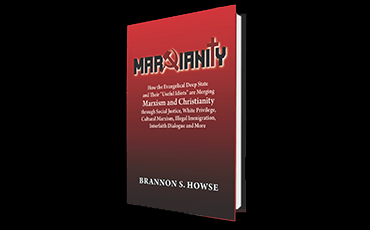Saul Alinsky (Short Bio Sketch)
By Brannon S. Howse
A young Italian Marxist by the name of Antonio Gramsci advised World War II dictator Benito Mussolini that violence was not the way to bring about a lasting revolution people would embrace and maintain. Gramsci wrote eloquently of a “quiet” revolution—one that would transform a culture from within by changing the basic worldview of each and every institution in society. He also cautioned that this revolution would be “a long march through the institutions,” not a blitzkrieg of change. So clear was his strategic thinking that Gramsci targeted Christianity specifically as the greatest philosophical adversary along the way.
Later in the twentieth century, Gramsci’s vision captivated another rising neo-Marxist who codified the Gramsci dream in a 1971 book, Rules for Radicals: A Pragmatic Primer for Realistic Radicals. There, Saul Alinsky detailed the need to penetrate the middle class and re-organize from within. Alinksy articulated tactics for infiltrating every conceivable social institution, including churches.
Alinsky had no compunction about speaking “against the Most High” because his allegiance lay elsewhere. The depth of Alinsky’s evil intent is clear from the dedication page of his book:
Lest we forget at least an over-the-shoulder acknowledgement to the very first radical; from all our legends, mythology, and history…the first radical known to man who rebelled against the establishment and did it so effectively that he at least won his own kingdom—Lucifer.
Here you see a rare, forthright declaration of the basic force behind all the Grave Influence thinkers. Alinsky betrays the secret that the globalist vision is threaded through a diverse assembly of influencers thanks to a strategy created by the devil himself. It explains their hatred of Christians and the biblical worldview. It also reaffirms the point that we are in a spiritual battle, and the prize is hearts and minds. Here are a few eye-opening excerpts from Rules for Radicals:
A Marxist begins with his prime truth that all evils are caused by the exploitation of the proletariat by the capitalists. From this he logically proceeds to the revolution to end capitalism, then into the third stage of reorganization into a new social order of the dictatorship of the proletariat, and finally the last stage…the political paradise of communism. (p. 10)
An organizer working in and for an open society is in an ideological dilemma to begin with, he does not have a fixed truth…truth to him is relative and changing; everything to him is relative and changing….To the extent that he is free from the shackles of dogma, he can respond to the realities of the widely different situations…. (pp. 10-11)
The first step in community organization is community disorganization. The disruption of the present organization is the first step toward community organization. Present arrangements must be disorganized if they are to be displaced by new patterns.... All change means disorganization of the old and organization of the new. (p. 116)
An organizer must stir up dissatisfaction and discontent.... He must create a mechanism that can drain off the underlying guilt for having accepted the previous situation for so long a time. Out of this mechanism, a new community organization arises....The job then is getting the people to move, to act, to participate; in short, to develop and harness the necessary power to effectively conflict with the prevailing patterns and change them. When those prominent in the status quo turn and label you an “agitator” they are completely correct, for that is, in one word, your function—to agitate to the point of conflict. (p. 117)
It is important to understand the tactics of Saul Alinsky because his ideas are being used to transform churches from within and turn their members into community organizers:
From the moment the organizer enters a community he lives, dreams... only one thing and that is to build the mass power base of what he calls the army. Until he has developed that mass power base, he confronts no major issues.... Until he has those means and power instruments, his “tactics” are very different from power tactics. Therefore, every move revolves around one central point: how many recruits will this bring into the organization, whether by means of local organizations, churches, service groups, labor Unions, corner gangs, or as individuals…. Change comes from power, and power comes from organization. (p. 113)
In one respect, I must tip my hat to Saul Alinsky. He knew what he believed, why he believed it, and he made disciples. As Alinsky demonstrates, the radical, godless left is often more committed to making disciples than are Christians. And regrettably, his disciples have ended up in some very, very high places—like the White House. President Obama studied Alinsky and community-organized many of his ideas into practice. Hillary Clinton’s senior honors thesis at Wellesley College was on Alinshky. Yet we’re told that 28 percent of evangelicals voted for Obama or Clinton. And this in spite of the fact that the Harvard/San Francisco wing of the Democrat Party is the most pro-abortion, pro-homosexual and pro-socialist party in the history of the United States.
Copyright 2012 ©Brannon Howse. This content is for Situation Room members and is not to be duplicated in any form or uploaded to other websites without the express written permission of Brannon Howse or his legally authorized representative.





